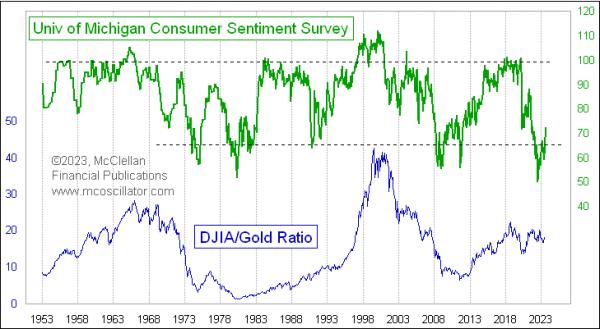President Biden is calling on Cabinet officials to urge more of their workers to return to the office this fall, part of a broader effort to return to normalcy more than three years after the coronavirus pandemic upended work patterns.
“As we look towards the fall, and with the end of the COVID-19 public health emergency, your agencies will be implementing increases in the amount of in-person work for your team,” White House Chief of Staff Jeff Zients wrote to Cabinet officials on Friday. “This is a priority of the President — and I am looking to each of you to aggressively execute this shift in September and October.”
Friday’s missive, first reported by Axios, brought renewed attention to a post-pandemic struggle for many private employers that has drawn the Biden administration into an increasingly partisan debate over government workers’ performance — and the potential waste of taxpayer money.
The move appeared to ratchet up pressure on federal agencies following a similar missive from the White House budget office in April. That guidance, the first since the coronavirus pandemic had sent hundreds of thousands of federal employees home to work in early 2020, instructed agencies to increase “meaningful” in-person work, particularly at agency headquarters. At the core of the directive was a commitment to “improve customer experience and services” to the public.
But the instructions, which appeared in a lengthy memo from Office of Management and Budget Director Shalanda Young, also left agencies with flexibility to continue their generous telework policies for many employees — and drew criticism from Republicans that it lacked teeth. While Zients’s letter Friday did not state that he or the president were dissatisfied with the pace of back-to-office efforts, it sought to highlight the importance of in-person work going forward.
“We are returning to in-person work because it is critical to the well-being of our teams and will enable us to deliver better results for the American people,” he wrote. “These changes will allow us to harness the benefits of enhanced flexibilities that we experienced during the pandemic, while ensuring we have the in-person time we need to build a strong culture, trust, and interpersonal connections.”
Zients added that working in person is critical for newer staff members and pointed out how the White House, which has been operating in person for the past two years and hosting large events like holiday parties without incident, has embraced a policy “which has allowed us to work more nimbly and effectively as a team and with the aim of serving you and your agencies better.”
The message comes as pressure is growing not just from Republicans on Capitol Hill to return federal workers to the office, but also from D.C. Mayor Muriel E. Bowser (D) and city leaders who are desperate to attract more workers and residents to downtown. Calls for a robust return to the office have accelerated in recent weeks from former New York Mayor Mike Bloomberg (D) and the nonpartisan Government Accountability Office, which in July released sobering statistics showing vacant offices at many Washington headquarters.
GAO, Congress’s research arm, reported that many agency headquarters remain vastly underused as federal workers stay home, costing the government millions of dollars a month in rent. GAO found that 17 of 24 large agencies that occupy most of the federal real estate footprint were filled at just 25 percent capacity or less during three separate weeks from January to March of this year.
“Underutilized office space has financial and environmental costs,” the report found.
During a House Transportation and Infrastructure Committee hearing to discuss GAO’s findings, officials said federal agencies spend about $2 billion a year to maintain office buildings they own and about $5 billion to lease office space, regardless of whether the buildings are occupied.
Pressure to let the workforce continue to work from home has come from unions representing federal employees — allies of the administration who have resisted most efforts to bring them back to the office. At many agencies, unions are attempting to codify permanent telework in new collective bargaining agreements. Biden, who has largely embraced unions during his presidency, could find himself on the opposing side of federal employee unions who favor more flexible work arrangements.
So far, the administration has not indicated what strategies, if any, it is using to monitor employees’ performance at home, drawing criticism from Republicans.
On Tuesday, Bloomberg wrote an opinion piece in The Washington Post calling on the federal government to enforce a stricter back-to-office approach.
“The pandemic is over,” he wrote. “Excuses for allowing offices to sit empty should end, too.”
Biden has publicly encouraged a return to work for months, including during a March 2022 State of the Union address in which he declared “the vast majority of federal workers will once again work in person.”
In May, Biden lifted the coronavirus emergency declaration, removing a number of pandemic-era restrictions and guidelines. But federal workers and many in the private sector have continued to embrace remote work.
Many federal buildings are located in the District, and Bowser has lamented the impact of empty offices on the vitality and fiscal health of the nation’s capital.
“The federal government represents one quarter of DC’s pre-pandemic jobs and owns or leases one third of DC’s office space,” Bowser said in January during her inaugural address. “We need decisive action by the White House to either get most federal workers back to the office most of the time or to realign their vast property holdings for use by the local government, by non-profits, by businesses and by any user willing to revitalize it.”
Zients appeared to acknowledge the potential difficulty of convincing more federal workers to return to the office after many have become accustomed to the conveniences of remote work.
“It will take hard work and focus to make this change, and to consistently communicate with your staff about why the change matters — and why this is the right step for your agency and for your mission,” he wrote.




























